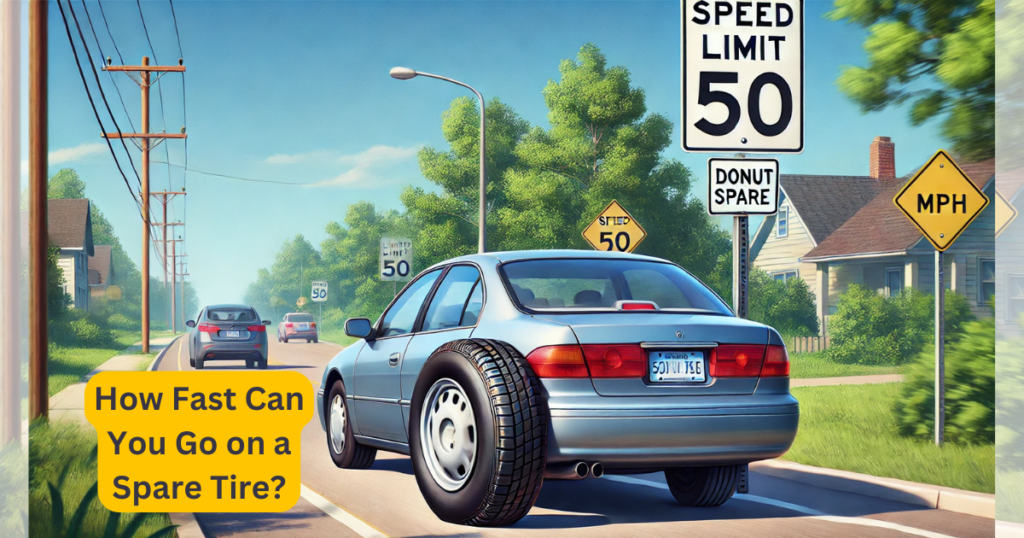
Driving on a spare tire is a common experience for many drivers, but it comes with important limitations. One of the most pressing questions is: How fast can you safely drive on a spare tire? The short answer is that most spare tires, especially donut tires, have a speed limit of 50 mph. Exceeding this limit can compromise your safety and damage the tire.
In this article, we’ll explore everything you need to know about spare tire speed limits, how long you can drive on one, and essential safety tips to keep in mind. Whether you’re dealing with a flat tire or preparing for emergencies, this guide will help you stay safe on the road.
CTA: Keep reading to learn the speed limits, safety tips, and risks of driving on a spare tire.
What Is a Spare Tire?
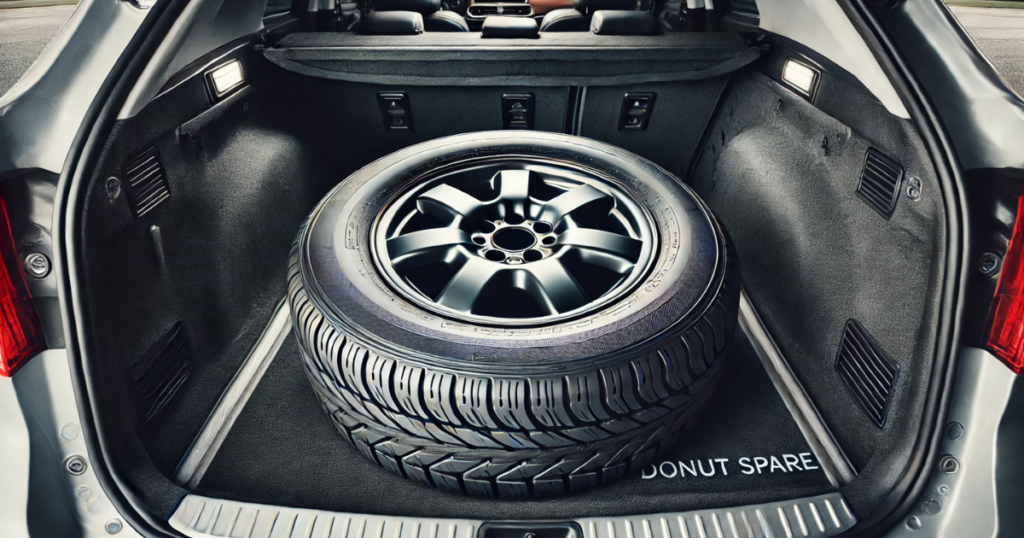
A spare tire, also known as a temporary spare tire or donut tire, is a smaller, lighter tire designed for short-term use when you have a flat. Unlike a regular tire, a spare tire is not built for long distances or high speeds. Its primary purpose is to get you to the nearest repair shop safely.
Spare tires come in two main types: compact spare tires (donuts) and full-size spare tires. While full-size spares can often be used like regular tires, compact spares have strict limitations, including a maximum speed limit and a limited lifespan.
Safe Speed Limits for Spare Tires
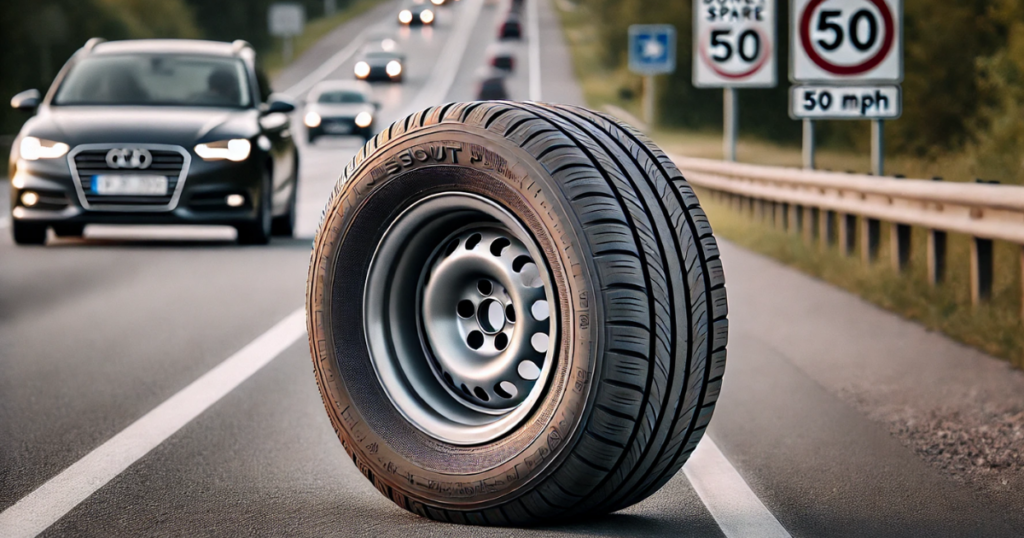
The speed limit for a spare tire is typically 50 mph. This limit is set because spare tires are not designed to handle the stress of high-speed driving. Exceeding this limit can lead to:
- Reduced vehicle stability and handling.
- Increased risk of a blowout due to overheating.
- Longer braking distances, which can be dangerous in emergencies.
If you’re wondering, “Can you drive 70 mph on a spare tire?” the answer is no. Driving at higher speeds puts unnecessary strain on the tire and can compromise your safety. Always adhere to the spare tire speed limit to avoid accidents.
Risks of Driving Too Fast on a Spare Tire
Driving too fast on a spare tire can have serious consequences. For example:
- Reduced Handling: Spare tires are smaller and lighter, which affects your vehicle’s balance and steering.
- Increased Braking Distance: The tire’s limited grip can make it harder to stop quickly.
- Risk of Blowouts: High speeds generate heat, which can cause the tire to fail.
If you’re asking, “Can a spare tire blow out at high speeds?” the answer is yes. Always drive cautiously and within the recommended speed limit.
How Far Can You Drive on a Spare Tire?

In addition to speed limits, spare tires also have distance limitations. Most manufacturers recommend driving no more than 50-70 miles on a spare tire. This is because temporary spare tires are not built for long-term use and can wear out quickly.
If you’re planning a long trip, it’s best to replace your spare tire with a regular tire as soon as possible. Driving beyond the recommended distance can lead to tire failure and put you at risk.
Differences Between Spare Tires and Regular Tires
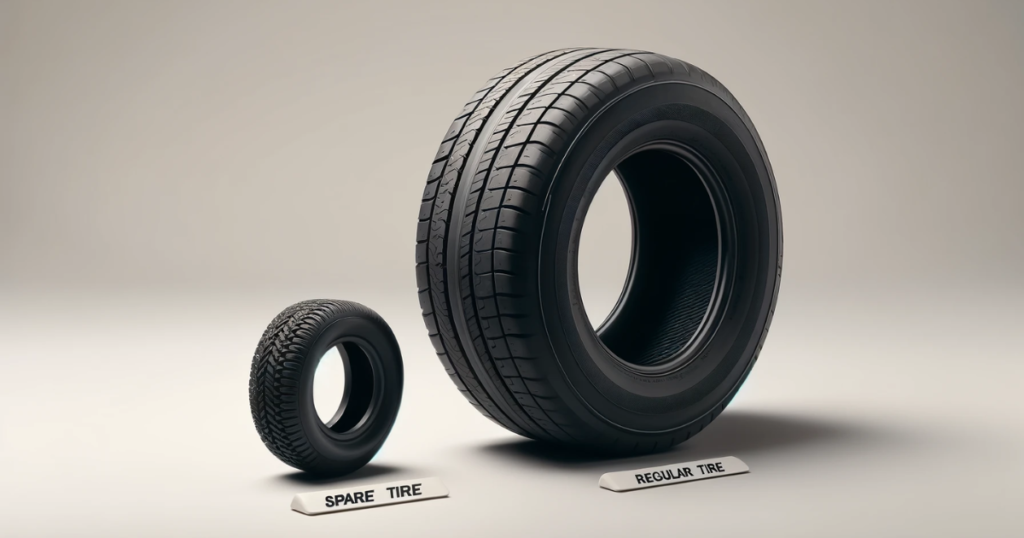
Understanding the differences between a spare tire and a regular tire can help you make informed decisions. Here’s a quick comparison:
| Aspect | Spare Tire | Regular Tire |
|---|---|---|
| Size | Smaller and lighter | Full-size and durable |
| Speed Limit | 50 mph | No specific limit |
| Lifespan | 50-70 miles | Thousands of miles |
| Purpose | Temporary use only | Long-term use |
Spare tires are not a substitute for regular tires, and using them beyond their intended purpose can be dangerous.
Tips for Safe Driving on a Spare Tire
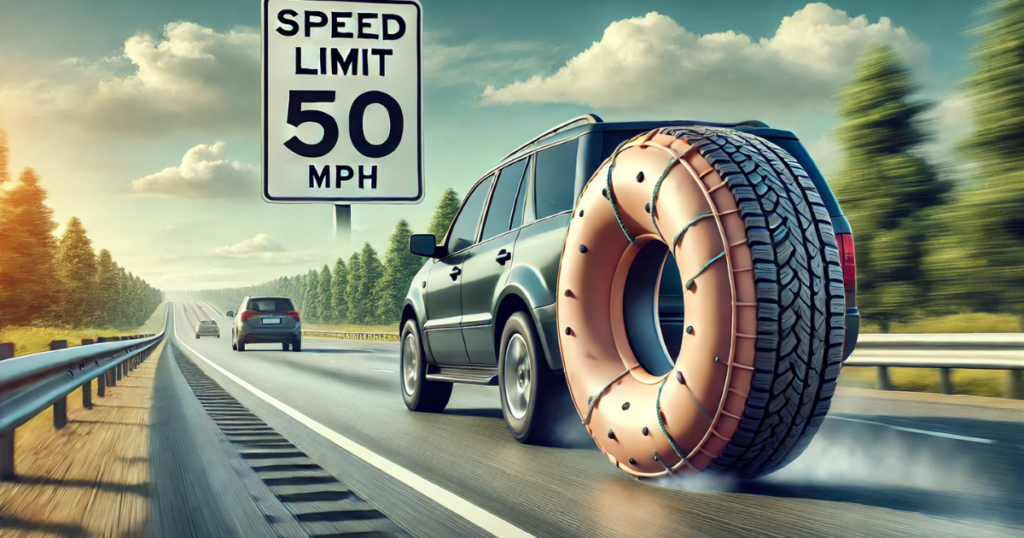
To ensure your safety while driving on a spare tire, follow these tips:
- Check Tire Pressure: Ensure your spare tire is properly inflated before use.
- Reduce Speed: Stick to the 50 mph speed limit.
- Avoid Rough Roads: Steer clear of potholes and uneven surfaces.
- Drive Cautiously: Be mindful of your vehicle’s handling and braking.
- Replace ASAP: Get your regular tire repaired or replaced as soon as possible.
By following these guidelines, you can minimize risks and stay safe on the road.
When to Replace Your Spare Tire

Even if you haven’t used your spare tire, it’s important to check its condition regularly. Over time, spare tires can degrade due to age, exposure, and lack of use. Here’s when to consider a replacement:
- After driving on it for 50-70 miles.
- If it’s more than 6-10 years old (check the manufacturer’s guidelines).
- If you notice cracks, bulges, or other signs of damage.
Replacing your spare tire ensures it’s ready for emergencies and maintains your safety.nd maintains your safety.
FAQs About Spare Tires
What is a spare tire?
- A spare tire is a temporary tire used in emergencies.
How fast can you drive on a spare tire?
- The speed limit is typically 50 mph.
How long can you drive on a spare tire?
- Most spare tires are designed for 50-70 miles.
Can you drive 70 mph on a spare tire?
- No, it’s unsafe and can damage the tire.
Is it safe to drive long distances on a spare tire?
- No, spare tires are for short-term use only.
What happens if you drive too fast on a spare tire?
- It can lead to reduced handling, longer braking distances, and blowouts.
Can a spare tire blow out at high speeds?
- Yes, high speeds increase the risk of a blowout.
How do I know when to replace my spare tire?
- Replace it after use or if it’s old or damaged.
What’s the difference between a spare tire and a regular tire?
- Spare tires are smaller, lighter, and for temporary use only.
What should I do if I get a flat tire?
- Replace it with your spare tire and drive to the nearest repair shop.
Driving on a spare tire is a practical solution for emergencies, but it comes with important limitations. Always adhere to the 50 mph speed limit and replace your spare tire as soon as possible. By following these guidelines, you can ensure your safety and avoid unnecessary risks on the road.
If you found this article helpful, share it with others who might benefit from learning about spare tire safety!




